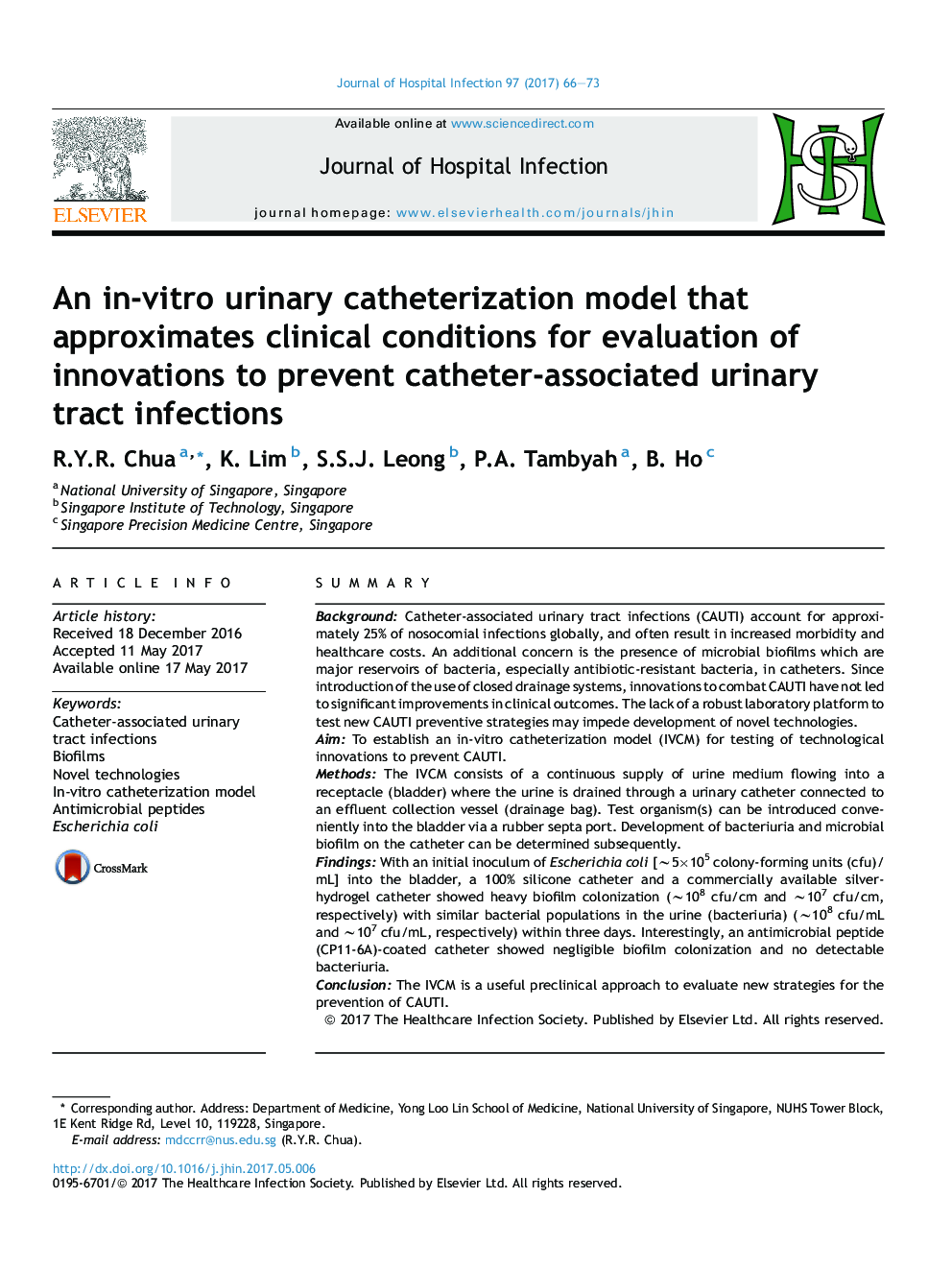| کد مقاله | کد نشریه | سال انتشار | مقاله انگلیسی | نسخه تمام متن |
|---|---|---|---|---|
| 5668373 | 1407898 | 2017 | 8 صفحه PDF | دانلود رایگان |

SummaryBackgroundCatheter-associated urinary tract infections (CAUTI) account for approximately 25% of nosocomial infections globally, and often result in increased morbidity and healthcare costs. An additional concern is the presence of microbial biofilms which are major reservoirs of bacteria, especially antibiotic-resistant bacteria, in catheters. Since introduction of the use of closed drainage systems, innovations to combat CAUTI have not led to significant improvements in clinical outcomes. The lack of a robust laboratory platform to test new CAUTI preventive strategies may impede development of novel technologies.AimTo establish an in-vitro catheterization model (IVCM) for testing of technological innovations to prevent CAUTI.MethodsThe IVCM consists of a continuous supply of urine medium flowing into a receptacle (bladder) where the urine is drained through a urinary catheter connected to an effluent collection vessel (drainage bag). Test organism(s) can be introduced conveniently into the bladder via a rubber septa port. Development of bacteriuria and microbial biofilm on the catheter can be determined subsequently.FindingsWith an initial inoculum of Escherichia coli [â¼5Ã105Â colony-forming units (cfu)/mL] into the bladder, a 100% silicone catheter and a commercially available silver-hydrogel catheter showed heavy biofilm colonization (â¼108Â cfu/cm and â¼107Â cfu/cm, respectively) with similar bacterial populations in the urine (bacteriuria) (â¼108Â cfu/mL and â¼107Â cfu/mL, respectively) within three days. Interestingly, an antimicrobial peptide (CP11-6A)-coated catheter showed negligible biofilm colonization and no detectable bacteriuria.ConclusionThe IVCM is a useful preclinical approach to evaluate new strategies for the prevention of CAUTI.
Journal: Journal of Hospital Infection - Volume 97, Issue 1, September 2017, Pages 66-73